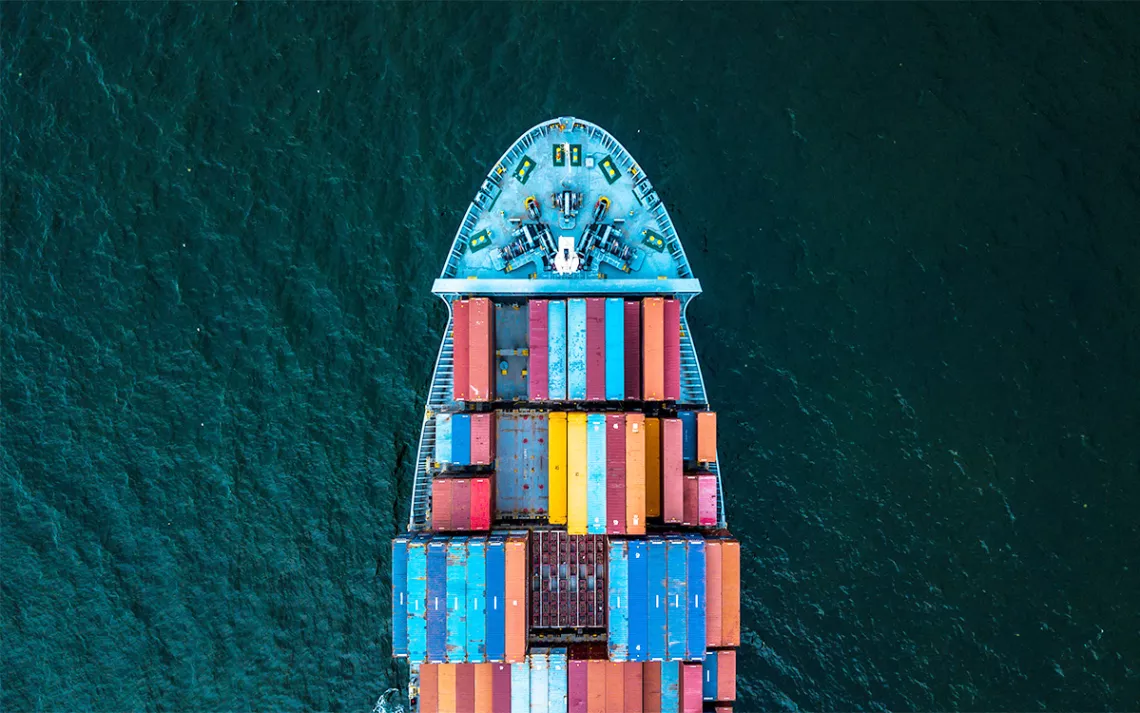First-Ever Agreement to Cut Global Shipping Emissions Finally Reached
Shipping industry comes up with a plan after multiple delays

Photo by AvigatorPhotographer/iStock
The global shipping industry has never united behind a collective agreement to cut greenhouse gases—until now. On Friday, the United Nations International Maritime Organization approved a long-delayed strategy to cut emissions from ships, with the end goal of eliminating CO2 emissions altogether by 2100. The move is a major step forward for an industry responsible for producing 2.2 percent of the world’s CO2 emissions.
“Never before has a meeting generated such great interest—not only within the maritime community but far beyond . . . the stakes are high and the expectations even higher [to cut shipping emissions],” IMO Secretary-General Kitack Lim said prior to the talks.
The total greenhouse gas emissions from international shipping will reach a new high soon, according to the IMO, so its new strategy aims to cut emissions to half by 2050, compared with earlier emissions levels in 2008. Once the shipping sector reaches that goal, the next step will be to phase out emissions completely.
The shipping industry is kicking off the plan by examining and revising design requirements in order to make new ships more energy efficient, which will include concrete goals for each ship type to achieve in terms of reducing emissions.
The IMO has a history of holding meetings that come and go without producing concrete strategies, in spite of numerous countries calling for emissions reduction for years. The international shipping industry is not affected by the annual United Nations talks proposing carbon cuts in combating climate change. Like those of airline carriers, the industry’s less-than-planet-friendly operations are not bound by the 2015 Paris climate agreement.
The organization passed a rule in 2011 that only regulates ships built after 2013, aiming to make new ships 30 percent more energy efficient in 2025 than they were in 2014. The outcome of its most recent meetings was crucial because the new strategy would begin regulating the CO2 emissions from current fleets.
Member states attending this month’s meetings were split into two camps: one side calling for drastic CO2 cuts and the other insistent that there was no need for a new strategy.
Among nations that submitted proposals for the strategy draft, the Marshall Islands had the most aggressive plan, calling for the complete phase-out of CO2 emissions from ships by 2035, while Japan’s more conservative goal calls for a 50 percent cut by 2060. The United Kingdom and Norway are among several European countries that are also adamant about reducing emissions. To align with the Paris Agreement, the UK and other European Union states committed to reduce emissions by at least 70 percent of their 2008 levels by 2050, and Norway’s government representatives suggested halving emissions by 2050.
Anticipating another potential delay to produce a working strategy, EU members announced in March that the EU would begin imposing its own, much stricter restrictions on CO2 output from shipping if the committee does not provide a satisfactory resolution, also incorporating the shipping sector into the EU’s emissions trading plans.
The handful of member states opposing these proposals include Saudi Arabia, India, Brazil, Panama, and Argentina.
Not all were convinced that the IMO was making new progress. “The IMO faces one of its toughest tests to prove it’s relevant to the climate process and that it’s capable of delivering solutions to address shipping’s climate impact,” said Faig Abbasov, shipping policy officer at the European Federation for Transport and Environment.
In addition to addressing emissions reduction, the IMO also agreed to develop a ban on using heavy fuel oil in the Arctic, and to address the plastic litter left in the ocean by ships.
 The Magazine of The Sierra Club
The Magazine of The Sierra Club



